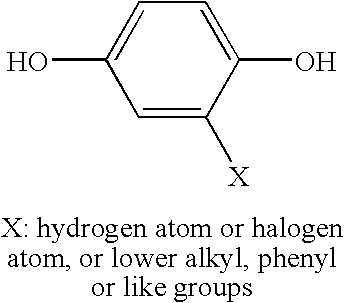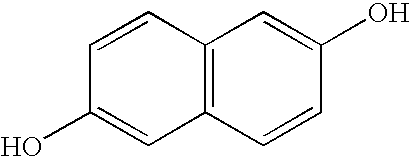Release film for use in manufacture of printed circuit boards
- Summary
- Abstract
- Description
- Claims
- Application Information
AI Technical Summary
Benefits of technology
Problems solved by technology
Method used
Image
Examples
example 1
[0068]Using an ultra high molecular weight polyethylene sheet, manufactured by Saxin Corporation of Japan and having a thickness of 100 μm, as the thermoplastic resin layer and aluminum, manufactured by Toyo Aluminium K.K. of Japan and having a thickness of 50 μm, as the metallic layer, the release film (I) was prepared.
[0069]The film having a film thickness of 50 μm and a melting point of 280° C. was obtained by means of an inflation film forming method, in which a thermotropic liquid crystal polymer having a melting point of 280° C., which is a copolymer of p-hydroxybenzoic acid and 6-hydroxy-2-naphthoic acid and, was melt extruded and drawn with its draw ratios in longitudinal and transverse directions controlled. The resultant film was then allowed to stand within a hot air dryer of 260° C. for three hours for heat treatment to thereby obtain the film having a melting point of 290° C. Using this resultant film as a base film, copper foils each 18 μm in thickness were set on uppe...
example 2
[0072]The flexible printed circuit board was prepared in a manner similar to that under Example 1 described above, except that in place of the ultra high molecular weight polyethylene sheet made by and available from Saxin Corporation, an ultra high molecular weight polyethylene sheet of 130 μm in thickness, made by and available from Yodogawa Hu-Tech Co., Ltd., of Japan, was used as the resin layer to form the release film (I).
PUM
| Property | Measurement | Unit |
|---|---|---|
| Thickness | aaaaa | aaaaa |
| Thickness | aaaaa | aaaaa |
| Pressure | aaaaa | aaaaa |
Abstract
Description
Claims
Application Information
 Login to View More
Login to View More - R&D
- Intellectual Property
- Life Sciences
- Materials
- Tech Scout
- Unparalleled Data Quality
- Higher Quality Content
- 60% Fewer Hallucinations
Browse by: Latest US Patents, China's latest patents, Technical Efficacy Thesaurus, Application Domain, Technology Topic, Popular Technical Reports.
© 2025 PatSnap. All rights reserved.Legal|Privacy policy|Modern Slavery Act Transparency Statement|Sitemap|About US| Contact US: help@patsnap.com



